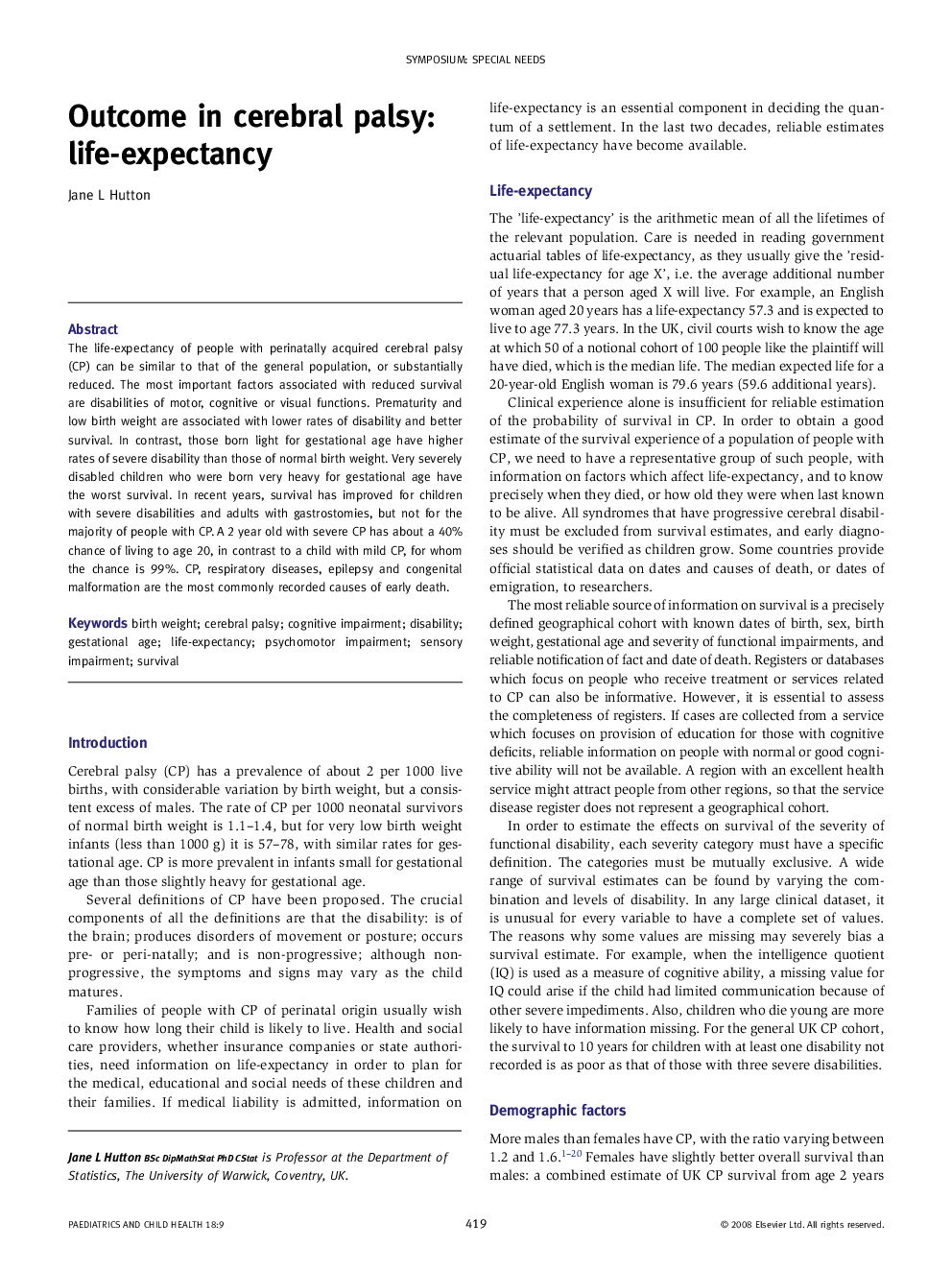| Article ID | Journal | Published Year | Pages | File Type |
|---|---|---|---|---|
| 4172814 | Paediatrics and Child Health | 2008 | 4 Pages |
The life-expectancy of people with perinatally acquired cerebral palsy (CP) can be similar to that of the general population, or substantially reduced. The most important factors associated with reduced survival are disabilities of motor, cognitive or visual functions. Prematurity and low birth weight are associated with lower rates of disability and better survival. In contrast, those born light for gestational age have higher rates of severe disability than those of normal birth weight. Very severely disabled children who were born very heavy for gestational age have the worst survival. In recent years, survival has improved for children with severe disabilities and adults with gastrostomies, but not for the majority of people with CP. A 2 year old with severe CP has about a 40% chance of living to age 20, in contrast to a child with mild CP, for whom the chance is 99%. CP, respiratory diseases, epilepsy and congenital malformation are the most commonly recorded causes of early death.
